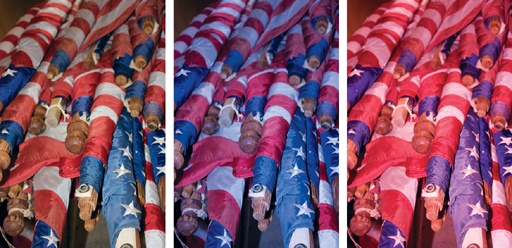Why Use Raw?
Using raw has many advantages, and we've already mentioned two important onesâthat the full bit depth of your image is preserved and that there's no JPEG compressionâbut there are other reasons.
Changing White Balance
As I explained in the previous section, when you shoot raw, all white balance adjustment functions are deferred until later and performed on your computer. This means you can set the white balance to anything you want after you've shot the image! So, if you were shooting in an especially tricky white balance situation, you can simply perform the equivalent of a manual white balance while editing your image on your computer.

Figure 11-1. With a raw file, you can achieve radically different white balances after you shoot your image.
Highlight Recovery
Raw files also allow you to perform a seemingly magical type of edit. You've seen what happens to a JPEG image when you overexpose the highlights: They turn to complete white and lose all detail. No matter how you edit the image, that detail is gone, and those areas will remain white.
With a raw file, though, there's a good chance you'll be able to recover the lost detail in your overexposed highlights.
If recovering data from nothing seems impossible, know that an overexposed, white area is not necessarily devoid of data. You've already learned that a pixel is composed of separate red, green, and blue elements. ...
Get The Canon EOS Digital Rebel XS/1000D Companion now with the O’Reilly learning platform.
O’Reilly members experience books, live events, courses curated by job role, and more from O’Reilly and nearly 200 top publishers.

